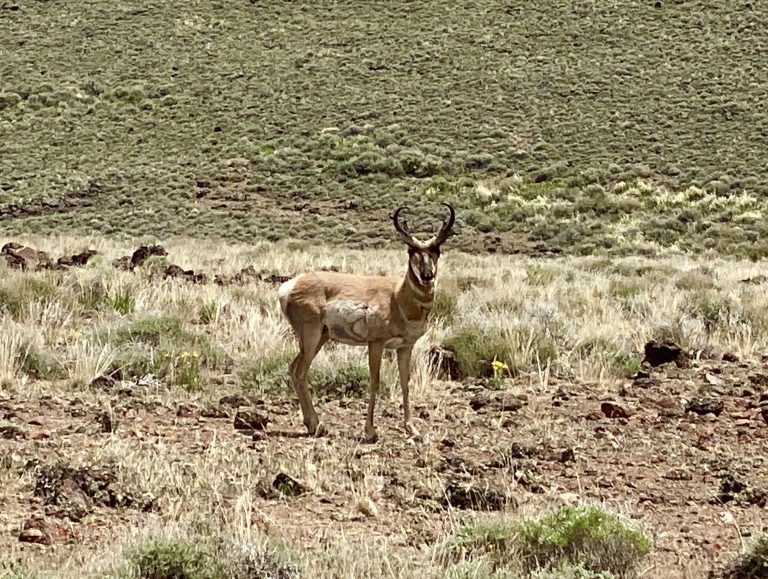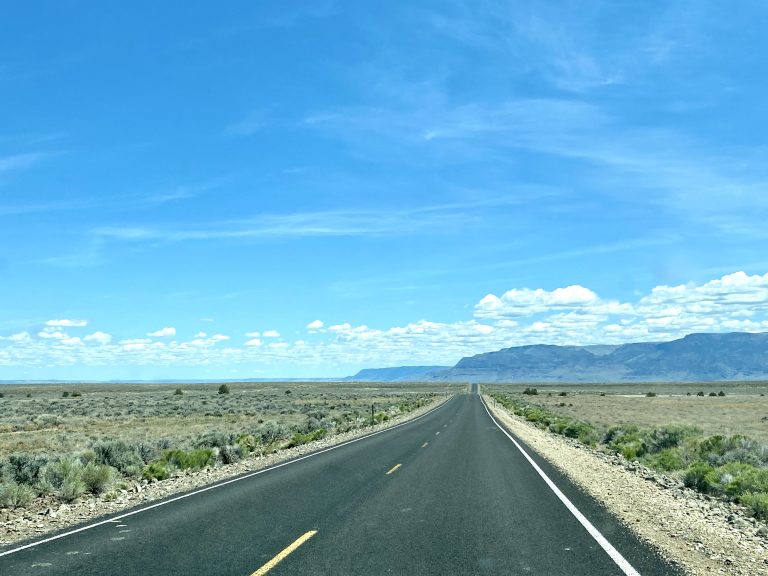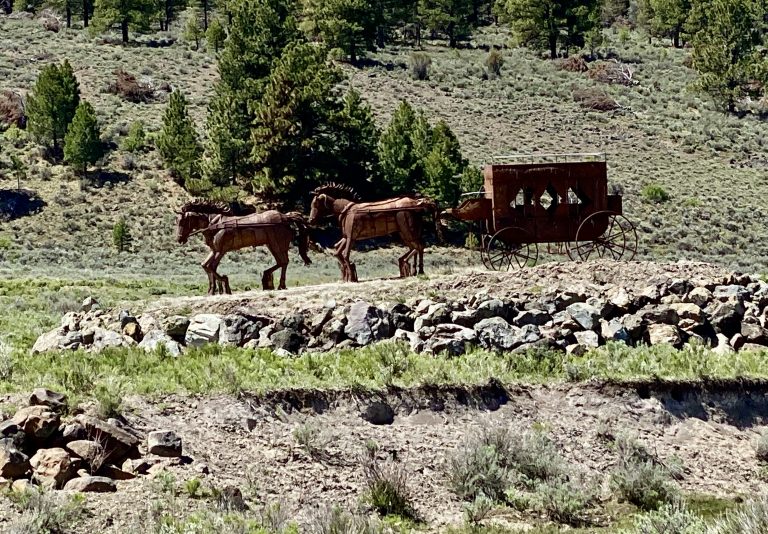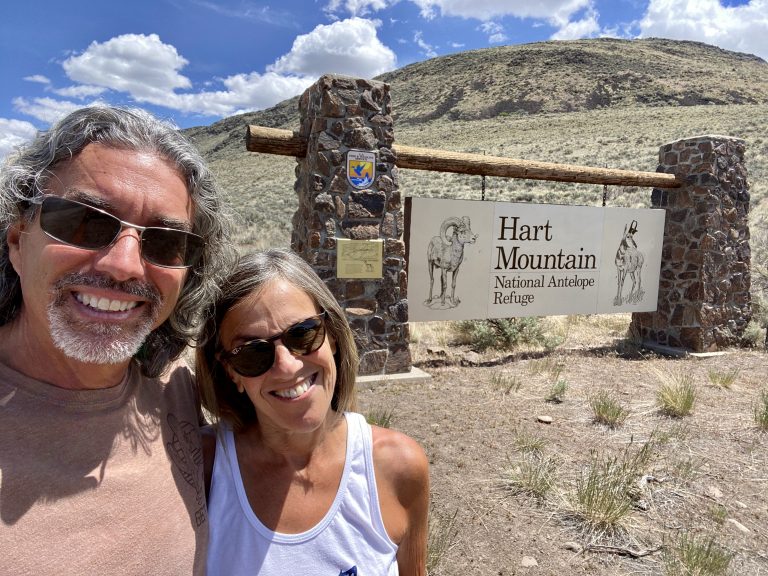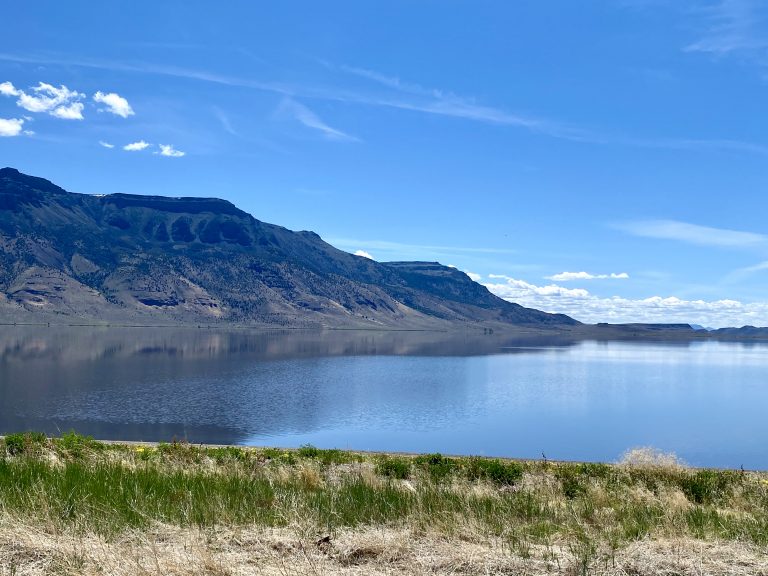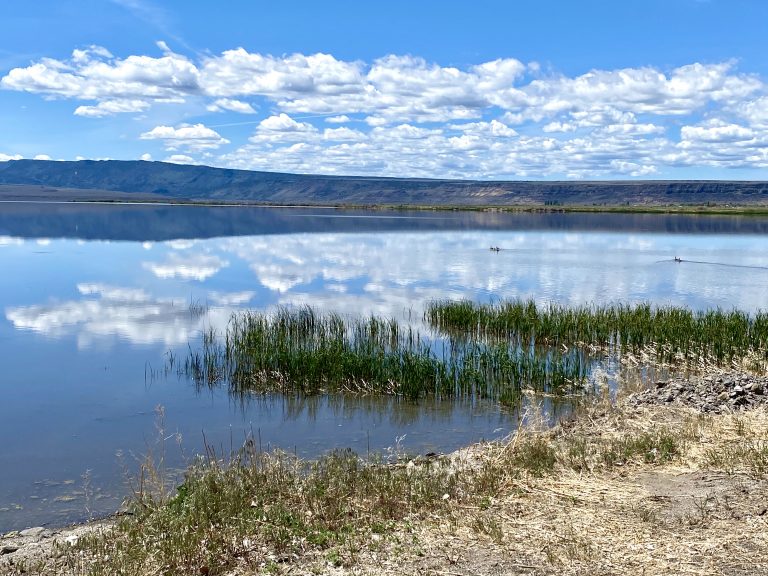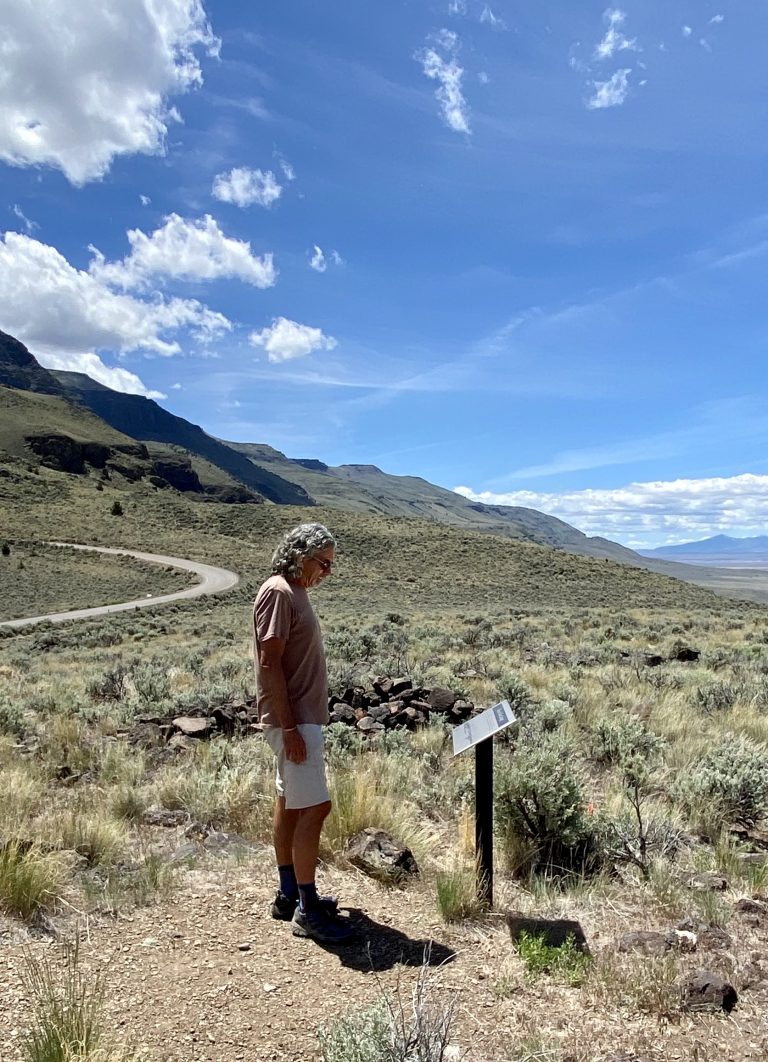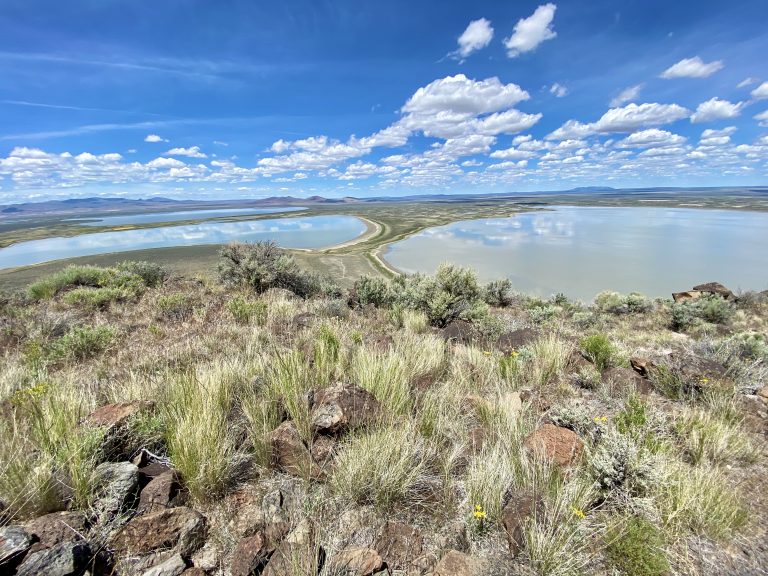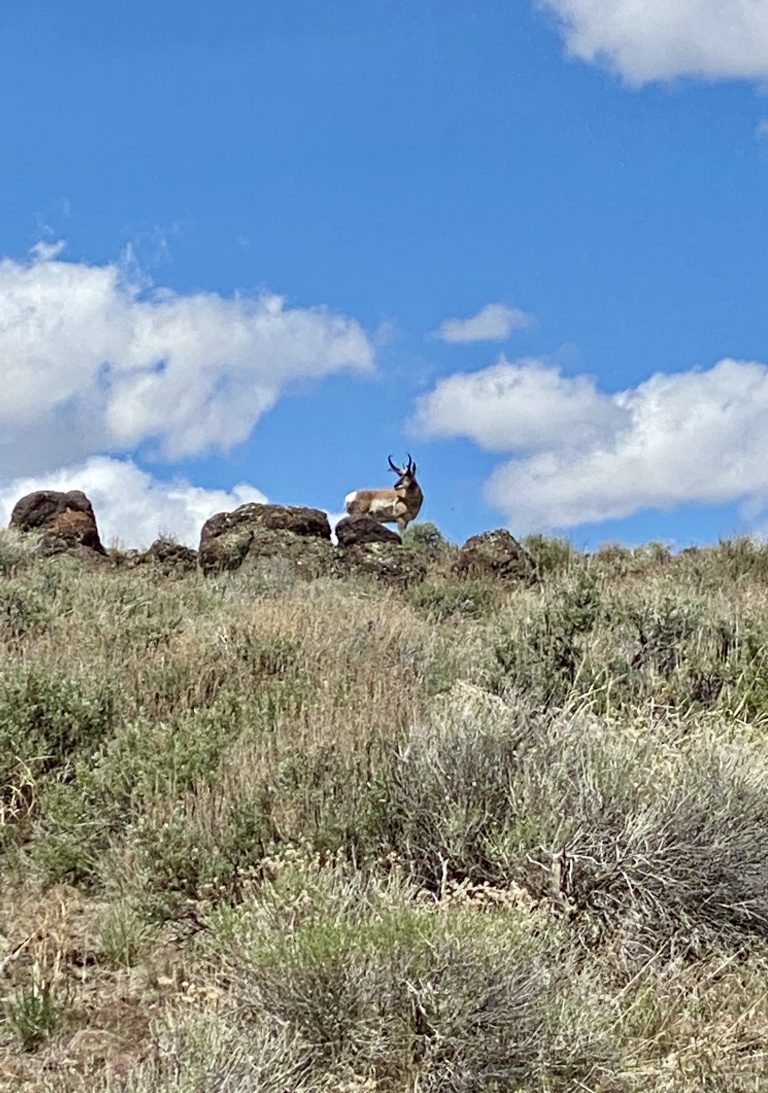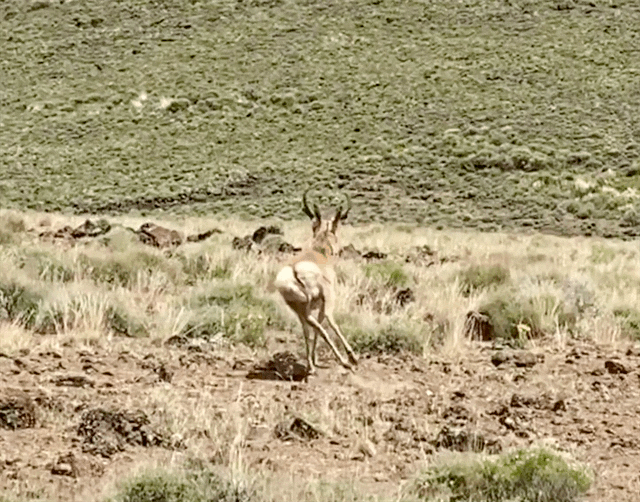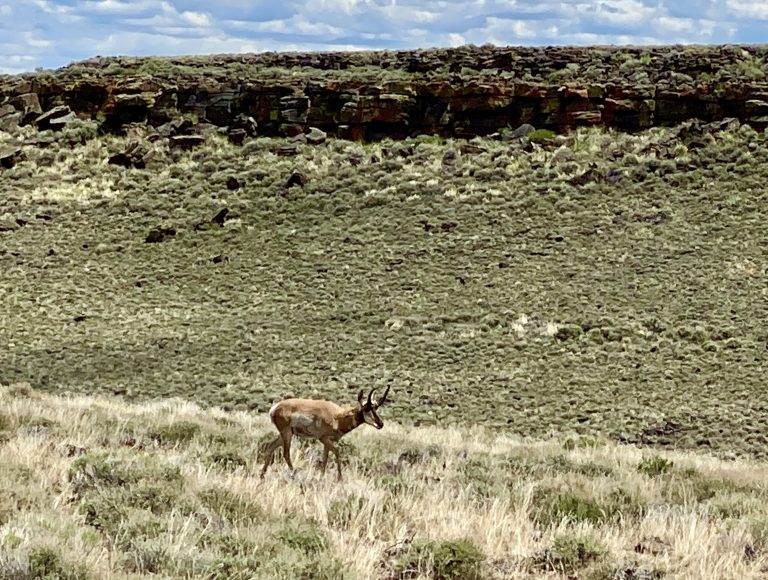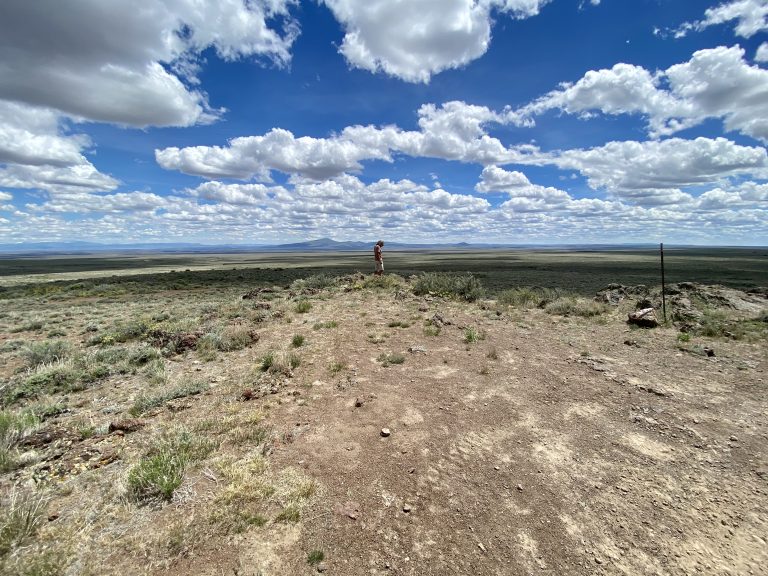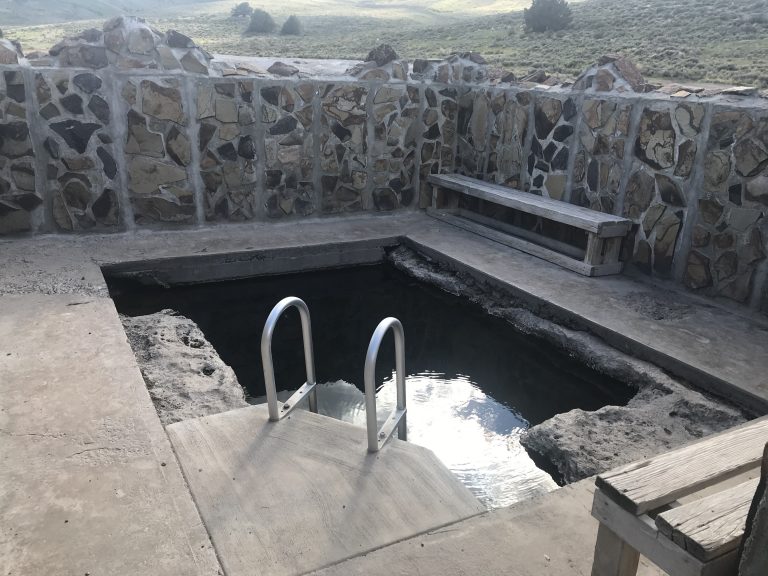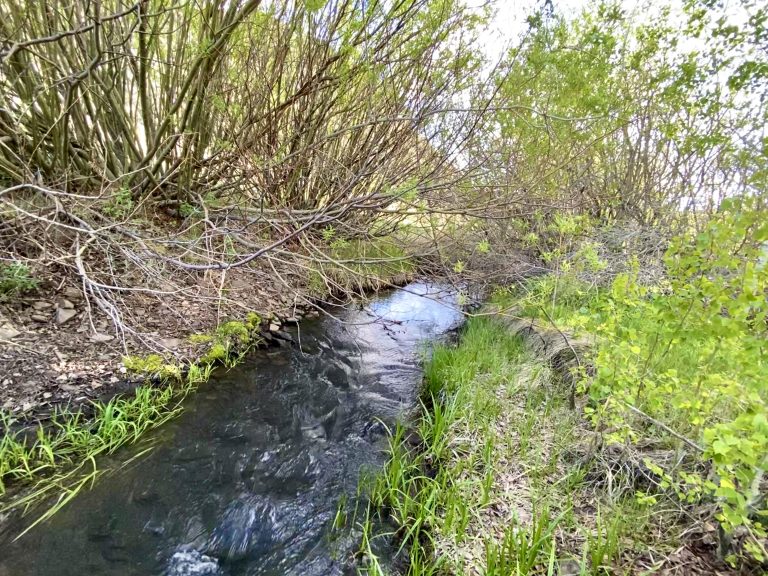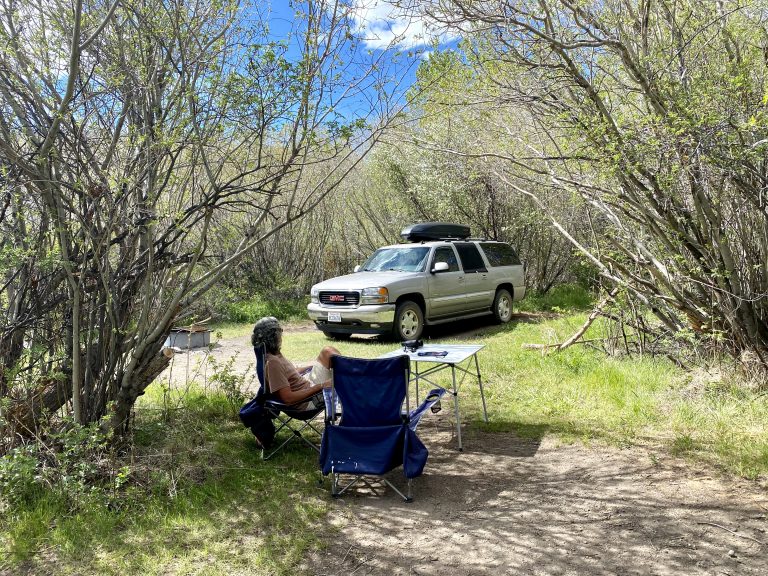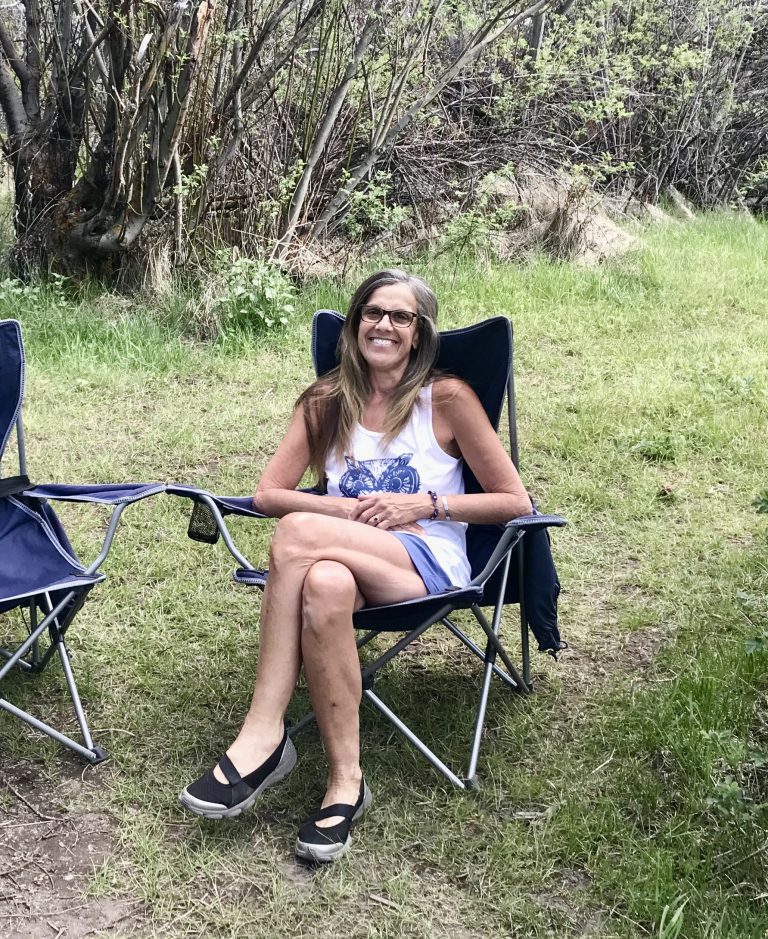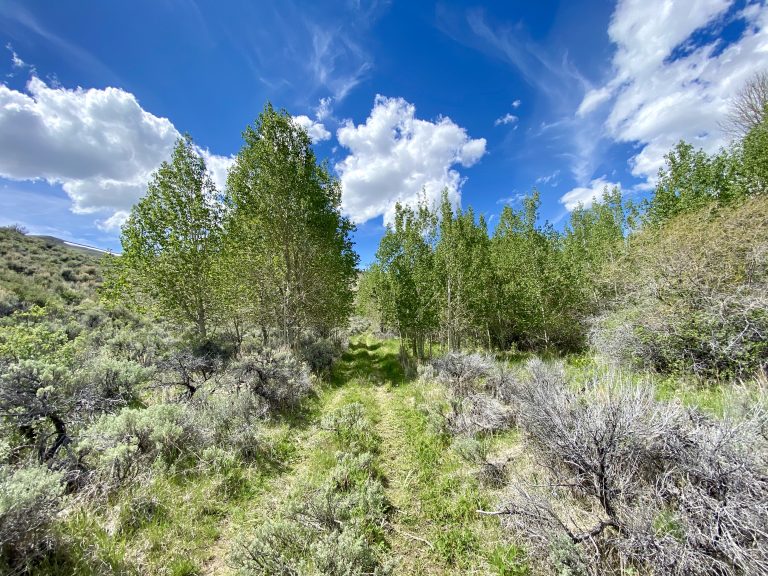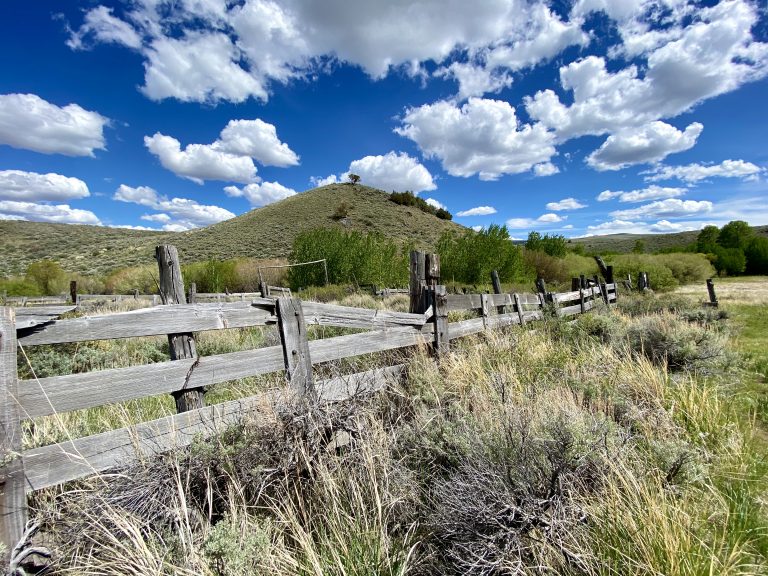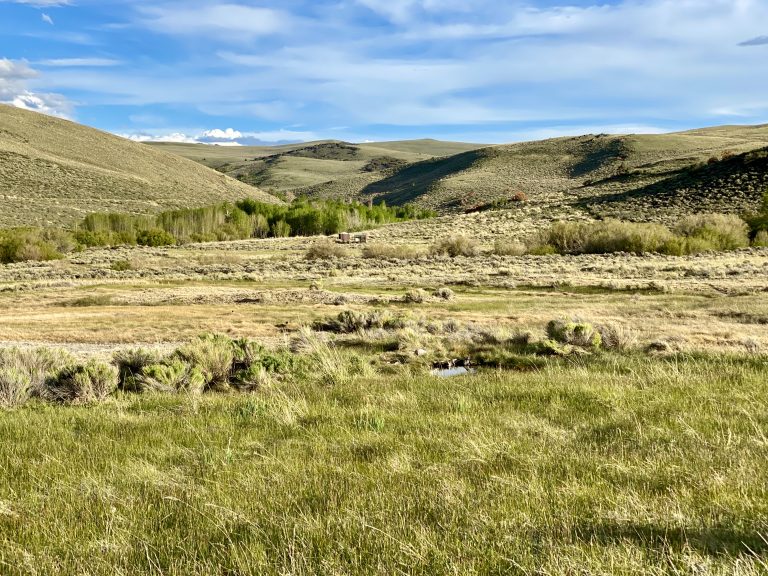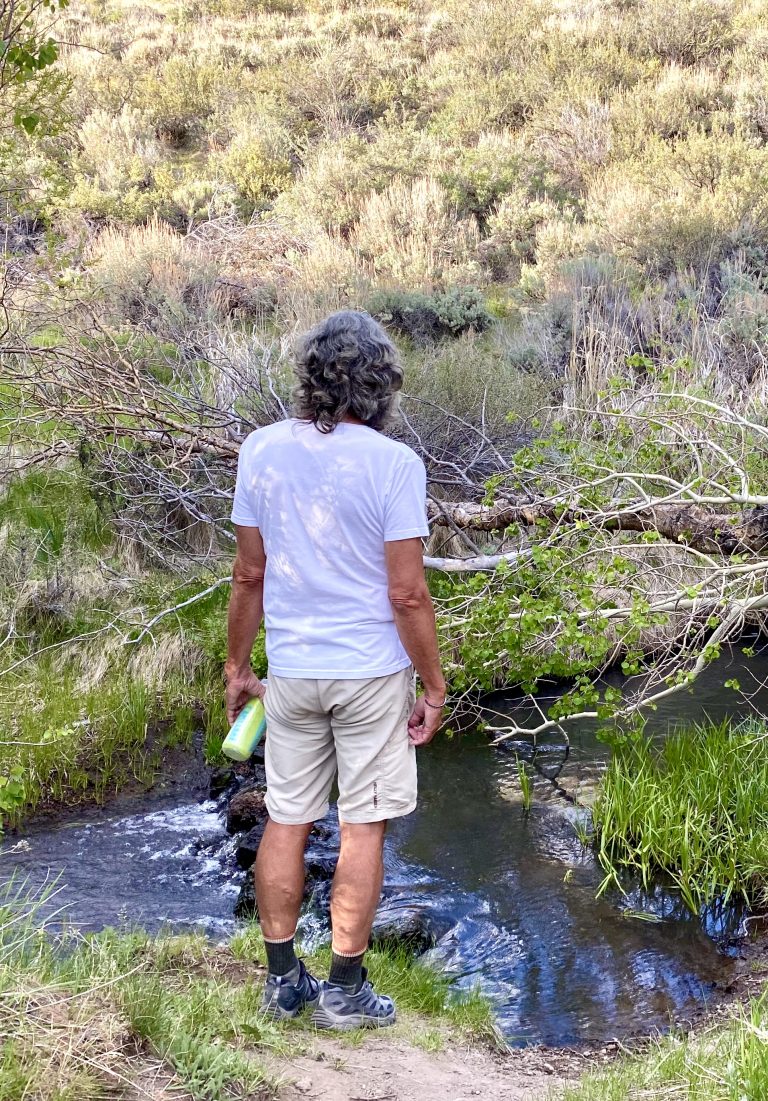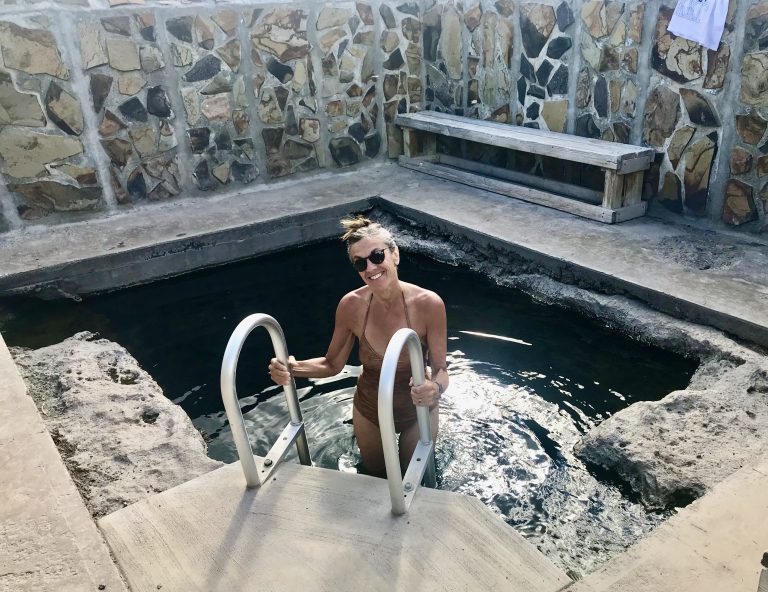May 27, 2020
Our remote campsite last night was incredibly quiet. We slept in and woke up with the sun already streaming through the tall pines. Some clouds dotted the sky. We lingered longer than usual over breakfast, not wanting to leave this peaceful place. How often do you find a place so quiet, even your footsteps are muffled by six inches of pine needles?
But we had places to see. Once we were on the road, we headed north on a sparsely traveled road. There were a few towns, none of them big enough for a gas station and I was glad we’d filled up 50 miles before. We could go another 400 miles if needed and from the map, we might need to.
At one point I stopped on the highway and backed up. Off to the side, beyond a grand gated entrance to a ranch was a life-size steel statue of a stagecoach and four horses looking as though they were racing through the meadow. We were still close to the Oregon Trail and someone thought to honor the emigrants and mail service from the 19th century.
Shortly after that, we passed a small pond and spotted half a dozen antelope in the distance—our first—at the shore, having a drink. We turned off the main highway onto a smaller road that would take us to the Hart Mountain National Antelope Refuge where we hoped we’d see more. The refuge is a huge area set aside for antelope, mule deer, bighorn sheep and many other animals and birds.
Eventually we entered into the refuge and began climbing a steep dusty dirt road that skirted several large shallow lakes, jointly known as the Warner Lakes, that filled most of the valley below. Along the lakes, we’d spotted ruddy ducks, spoonbills, geese and red-winged blackbirds.
A little farther up the road, we stopped to hike a one mile loop with a view of Warner Lakes below. The valley was once covered by a single vast lake but the water has since receded, and there are now a number of separate lakes with marshland between them.
The road we were on was the only one that crossed the Warner Mountain Range this far north and it led us through the antelope refuge – a vast open high prairie dotted with sagebrush and a few trees. It was sunny and cool that high up and the gentle scent of sage was pervasive. Eventually we came to the visitor center that was closed due to the coronavirus but found a good display and map we could take a picture of.
To spot wildlife, we decided to try for a more remote dirt road that we weren’t sure would be open. After several miles driving to get to it, we discovered it was closed but the few miles to the closed gate took us by a few antelope less than a hundred yards away.
From there, we found the turn-off for a road that led to a campground said to have a hot spring. When we turned into the campground, we found a small brick structure about five feet high, like a small house with no roof that came up only to my chest. Inside was a pretty little pool filled with hot water from the spring below. We’d definitely be back, having not had a shower or bath in three days.
The campground had no water or picnic tables, but it was located in an oasis of trees along a creek, had pit toilets, the hot springs, and was free. Most of the 24 sites were available so we drove around and checked them out. Our favorite was one tucked away in a small grove of aspen with the murmuring creek 15 feet away. It was completely hidden from all the other campsites and had some shade, something we didn’t think we’d need in 75 degree weather but the high desert sun was intense at 6,500 feet.
We took a short hike from the back of the campground and discovered an old corral and another hot spring pool (this one was too hot to get in).
Back at camp, we had dinner and a meeting to decide where we’d go next. The weather was glorious at mid-70’s and sunny but within two days a strong storm was expected that would include rain in the mountains and gusty winds in the desert. The forecasted wind eliminated the possibility of going to Black Rock Desert–High Rock Canyon in nearby northwestern Nevada (the Burning Man site we’d considered seeing) as it was known for blinding dusty windstorms. In fact, from a distance we’d already seen heavy dust hanging over the playa that was about 50 miles to the east as the crow flies. We talked about heading to the Oregon or northern California coast instead, but the coast was far away now that we’d driven so far east. The Warner Mountains were much higher farther south of us and almost all of the range was part of the Modoc National Forest. There was still some snow at higher elevations, but it seemed the South Warner Wilderness would be passable and rain would not arrive there for two more days. While we loved the high desert with its sagebrush and river willows, we really love the forests. We packed up intending to leave first thing and have breakfast and coffee somewhere on the road, not sure where it would take us.

